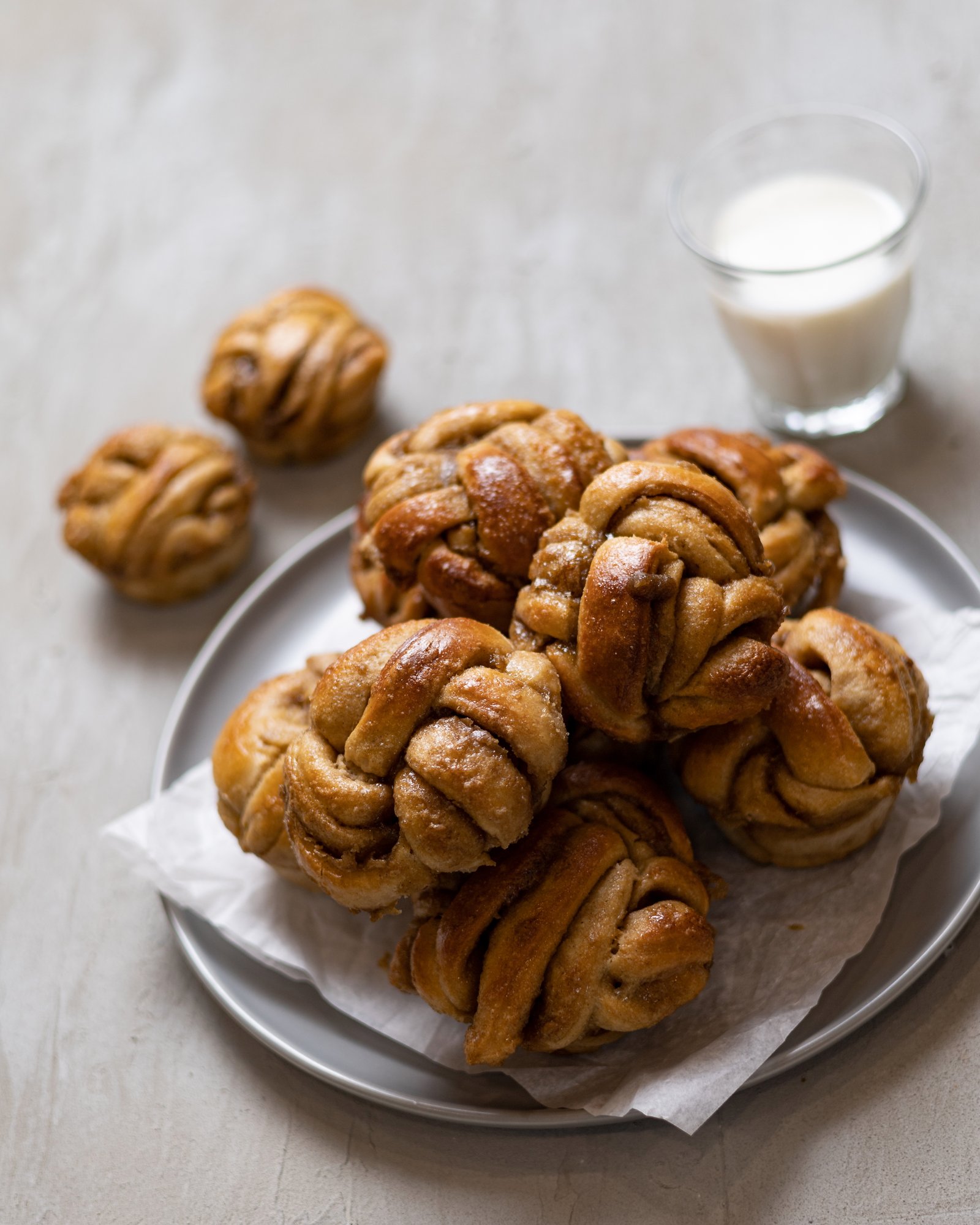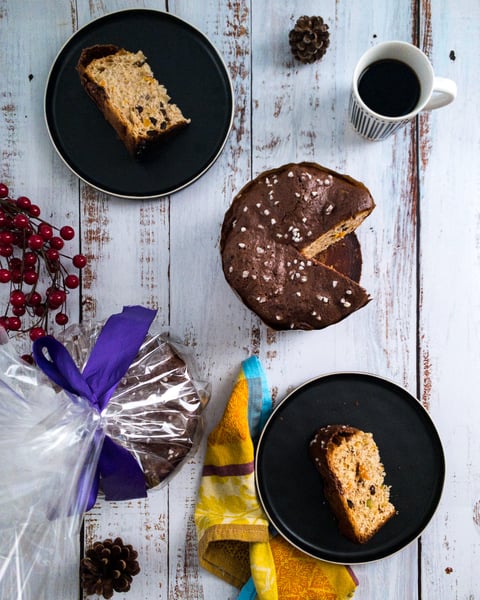
Sourdough Cardamom Knots
After having mastered baking sourdough loaves, I swiftly started experimenting with enriched doughs. Cinnamon rolls are far more famous, but I’d take a cardamom knot over a cinnamon bun any day. A classic Swedish baked good, kardemummaknutar, these delectable delights are found in bakeries around the world. Perfect for fika—a Swedish social coffee and cake break during the day—but also often paired with a cold glass of milk.
They can be rolled rather than knotted, kardemummabullar, but I prefer the uneven and imperfect knotted look. You can add a glaze or ice these if you wish; however, they’re delicious without and look rustic. This recipe requires the use of a muffin tray. As the knots are egg-washed, you don't need to add steam to your oven for this sourdough recipe.
Ingredients
Leaven
- 30g strong unbleached bread flour
- 30g water at 28–30ºC
- 40g sourdough starter
Dough
- 100% leaven
- 500g unbleached all-purpose flour
- 140g whole milk
- 200g unsalted butter
- 4 large eggs
- 50g sugar
- 10g salt
Filling
- 220g light brown sugar
- 40g all-purpose flour
- 40g unsalted butter
- 2 tsp ground cardamom seed
- 1/4 tsp salt
Egg Wash
- 1 whisked egg
- pinch of salt
Method
- Mix the leaven ingredients in a jar or the bowl you plan to mix the dough in later and leave for 2–4 hours until you see signs that fermentation is underway. You will see some air bubbles forming when it is ready. During this time, remove the butter from the fridge and allow it to come up to room temperature.
- Combine the eggs and milk and then mix them into your leaven in a large mixing bowl into a slurry. Once most of the large bits are broken down, add the flour and sugar and mix with your hands until all the flour has been absorbed. It should look like a scraggly mess. Leave the bowl covered with a damp cloth or some plastic wrap for an hour for autolysis to occur.
- Sprinkle the salt evenly across the dough. Cut the butter into small cubes and place one on the dough. Using your thumb and forefinger, pinch the dough until the salt and butter have combined into the dough. Keep adding cubes of butter one by one until all the butter has been incorporated. Leave the bowl covered for half an hour.
- Dip your hands in a bowl of room temperature water, then gently grasp the underside of the dough at one side of the bowl, stretch it slightly and fold it over towards the opposite side. Repeat, working your way around the bowl, between 4–8 times, until you feel the dough tightening and firming up. This step needs to be repeated three times with a half-hour pause after each series of stretches and folds. After the last series, leave the bowl covered for 30 minutes, then place the bowl in the refrigerator for 2 hours or overnight if you plan to bake the next day. The dough must be cold and firm before rolling out.
- Before getting ready to roll out the dough, mix all the filling ingredients in a bowl and keep covered until ready to use to prevent it from drying out. Prepare a muffin tray for baking by greasing it with butter.
- When the dough is sufficiently chilled, roll it out evenly on a floured surface into a rectangle roughly 30×60cm. With the long side facing you, spread the filling mixture over the dough. Fold the top edge down by a third, then fold the bottom up to the top, which should also be a third, encasing all of the filling. Using a sharp knife, trim off a sliver from the left and right sides to neaten up the edges, then cut the dough roughly every 5cm until you have 12 even strips of dough. Then take each strip and cut two evenly spaced lines 90% of the way up the dough, leaving the tops connected. Braid the strands together, then roll the top down oven to the bottom and place into the greased muffin tray with the braided pattern facing up. Leave to prove on the counter for 2 hours.
- About 45 minutes before the end of the proofing time, preheat the oven to 200ºC/400ºF.
- Once the knots have finished proving and the oven is hot, brush the cardamom knots with an egg wash, then bake for 20 minutes until nice and golden.
- Remove from the oven once cooked and place the muffin tray on a wire rack. Leave to cool for about 5–10 minutes, then remove the knots from the muffin tray and leave to continue to cool.


